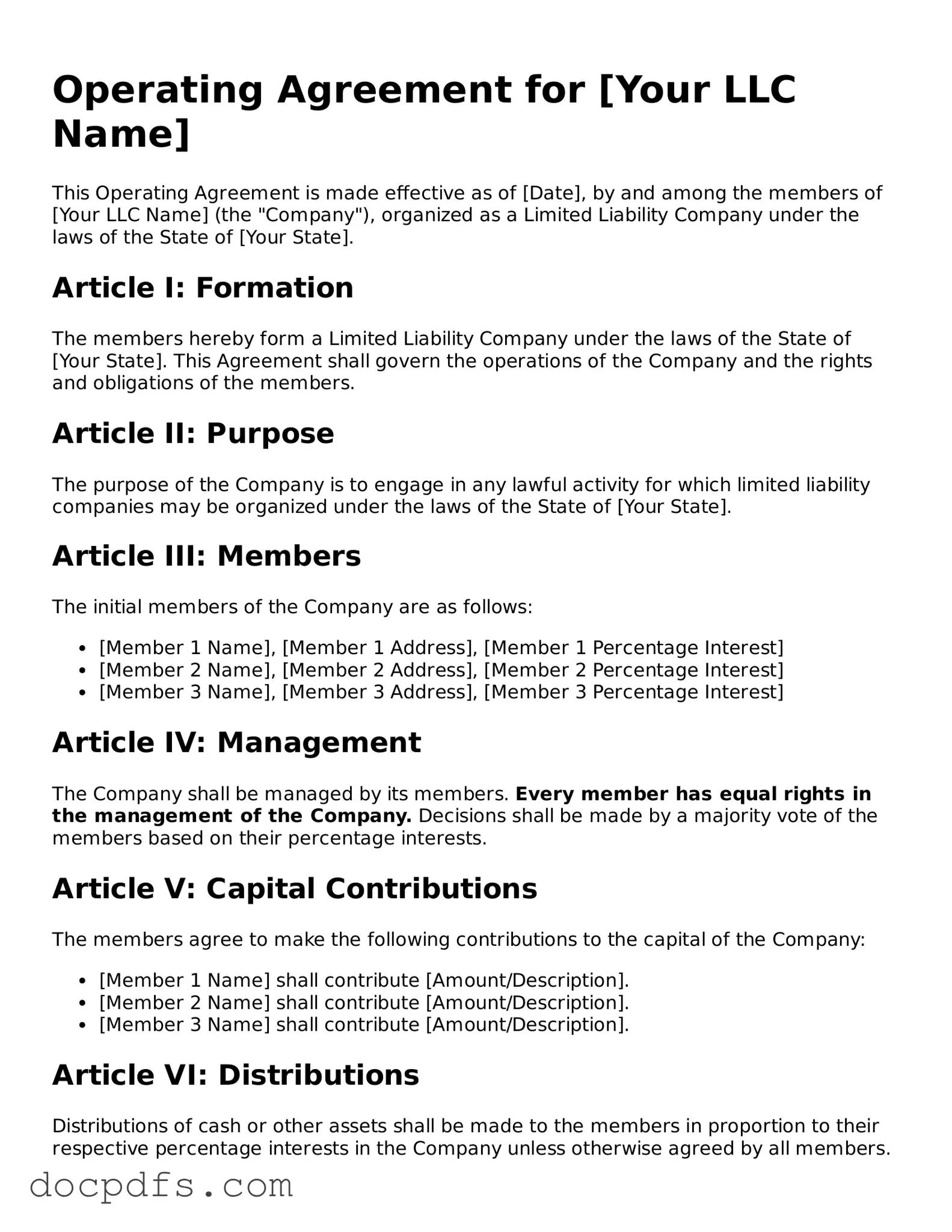What is an Operating Agreement?
An Operating Agreement is a foundational document used by Limited Liability Companies (LLCs) to outline the management structure and operational procedures of the business. It serves as a blueprint for how the company will be run, detailing the roles of members, decision-making processes, and distribution of profits. While not always required by law, having an Operating Agreement is highly recommended as it helps prevent misunderstandings among members.
Why do I need an Operating Agreement?
Having an Operating Agreement is crucial for several reasons:
-
It establishes clear guidelines for the operation of the LLC, reducing the potential for disputes.
-
It helps protect your limited liability status by demonstrating that the LLC is a separate entity.
-
It outlines the financial arrangements, including how profits and losses will be shared.
-
It can be used to establish procedures for adding new members or handling the departure of existing ones.
Who should create the Operating Agreement?
All members of the LLC should collaborate to create the Operating Agreement. This ensures that everyone's interests and expectations are taken into account. While you can draft it yourself, consulting with a legal professional can provide valuable insights and help ensure that the document complies with state laws.
What should be included in an Operating Agreement?
An effective Operating Agreement typically includes the following sections:
-
Company Information:
Name, address, and purpose of the LLC.
-
Member Information:
Names and contributions of each member.
-
Management Structure:
How the LLC will be managed—by members or designated managers.
-
Voting Rights:
How decisions will be made and the voting process.
-
Profit Distribution:
How profits and losses will be allocated among members.
-
Amendments:
Procedures for making changes to the agreement.
Is an Operating Agreement legally binding?
Yes, an Operating Agreement is legally binding among the members of the LLC, provided it is properly drafted and executed. It serves as a contract that outlines the rights and responsibilities of each member. However, it’s essential to ensure that the agreement complies with state laws to be enforceable.
Can I change my Operating Agreement after it is created?
Absolutely! An Operating Agreement can be amended as needed. Most agreements include a section outlining the process for making changes. Typically, this requires a majority vote from the members, but you should refer to your specific agreement for the exact procedure.
What happens if I don’t have an Operating Agreement?
Without an Operating Agreement, your LLC will be governed by your state’s default laws. This can lead to unintended consequences, such as disputes over profit sharing or management decisions. Additionally, lacking a formal agreement may jeopardize your limited liability protection, making it easier for creditors to pursue personal assets in the event of a lawsuit.
How can I create an Operating Agreement?
Creating an Operating Agreement can be straightforward. You can start by outlining the key elements mentioned earlier. Many templates are available online that can serve as a guide. However, for a tailored agreement that meets your specific needs and complies with state regulations, consider consulting with a legal professional. This investment can save you time and potential headaches down the road.
